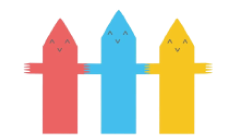1.Weather Insurance Case Study
2.Network Revenue and Cost Analysis
3.Product Business Interview
4.Credit Card Reward Program Case Study: Considerations for Launching, Expected Profit Calculation, Impact of Reward Program on Profit, and Target Audience Identification for Optimal Profit.
5.Weather Insurance Case Study: Structuring Evaluation of Target Customers, Calculating Disaster Likelihood for Profit, Segment Profit Calculation, and Product Combination Profit Charting.
6.Amusement Park Case Study: Revenue and Cost Drivers, Ticket Sales Revenue Calculation, Average Annual Pass Holder Visits, and Profitability Analysis with Landowner Fee Changes.
7.Discuss a digital product you like, list three competitors, what metrics you use to track its performance, and propose six improvements.
8.Cloud Service Provider Evaluation
9.Freemium Campaign Break-Even Analysis
10.Profit or Loss Calculation
11.Determining Business Profitability Factors
12.Strategies to Sell to Higher Risk Segments
13.Profit and Target Relationship
14.Maximize Profits from Customer Segments
15.Calculate Break-Even Risk Rate
16.Evaluate the Weather Insurance Product
17.Strategies to Achieve Customer Target
18.Content Production and Subscription Fee Strategy
19.Role Play: Flight Delay
20.Job Fit: Leadership and Team Experience
21.Case Analysis: Improbable (or Impossible?) Burger
22.Business Case: Eyewear Store Break-Even Analysis
23.Role Play: Flight Delay Scenario
24.Understanding Profit Calculation
25.Premium Pricing Strategy for Maximum Profit
26.Profitability Analysis of Customer Groups
27.Break-even Calculation with Monthly Premium Payments
28.Break-even Calculation with Upfront Premium Payment
29.Considerations for Launching Weather Insurance
30.Case Study Preparation
31.Investment Impact on Pricing
32.Pricing Strategy with Limited Production Capacity
33.Content Provision and Pricing Strategy
34.How to improve a water bottle in 10 ways
35.Credit Card Acquisition Strategy
36.Virtual Card Network (VCN) Case Study
37.Post-Failure Analysis of Impossible Burger
38.Profit and Break-Even Analysis for Impossible Burger
39.Decision on Developing the Vegan Burger
40.Maintaining Profit Margin in the Second Year
41.Calculating First Year's Profit Margin
42.Break-Even Analysis for the Second Year
43.Decision on Selling Both Burger Types
44.Average Profit Per Burger Comparison
45.Assessing the Validity of Assumptions
46.Calculating Incremental Profit for Vegan Burgers
47.Considerations for Selling Vegan Burgers
48.Favorite Digital App Discussion
49.Designing Umbrella Features
50.Power Utility Business Case
51.Food Truck Business Profit Optimization
52.Agricultural Profitability Case
53.Amusement Park Case Analysis
54.Job Fitting and Behavioral Case Scenario
55.Amusement Park Business Expansion Case
56.Eyewear Case Analysis
57.Weather Insurance Case
58.Amusement Park Case
59.Water Bottle Improvement Case
60.Network Company Case
61.Streaming Service Subscription Case
62.Investment Analysis for Solar and Corn Energy Projects
63.Calculating Minimum Energy Generation for ROI
64.Evaluating an Investment Decision as a CEO
65.Recommendation on Pricing Model Change
66.Pricing Strategy for Peak and Non-Peak Hours
67.Benefits of Running a Rideshare App Over a Taxi Company
68.Balancing Supply and Demand in an Overdemanded Situation
69.Expected Daily Profits Calculation
70.Factors to Consider for Profits in a New Rideshare Operation
71.Evaluate the Amusement Park Business Model
72.Estimate the Average Annual Visits for Annual Pass Holders
1. Weather Insurance Case Study
For a weather insurance product with a premium prepaid for 12 months at $30/month, servicing cost of $3/month, and a cost of benefits paid if failure at $8000, plus regulatory expenses of $4/quarter and an additional $300 if a benefit is paid, calculate the maximum likelihood of claims to break even. Given risks A, B, C, and D with cumulative risks, decide which to choose to maximize profit and explain your reasoning. Illustrate how adding B, C, and D would affect the profit curve.
2. Network Revenue and Cost Analysis
Given the following data: revenue of $40/month with the first three months free, a cost of $25/month, an installment cost of $35/customer, Marketing & Overhead costs totaling $120/customer, and the ability to acquire 10K new customers annually, calculate the net value per new customer. If the contract term changes to 18 months, discuss how the net value would be affected. With a contract term of 21 months, a 10% break contract rate, and a $100 penalty fee for breaking the contract, along with Marketing costs of $20/customer (variable) and Overhead costs of $1M (fixed), determine the number of customers needed to break even.
3. Product Business Interview
Describe your favorite digital app, including reasons for your preference. Explain the app and its business model as if I have no knowledge of it. Discuss the app's Total Addressable Market (TAM), competitors, and how it generates revenue. Identify potential future revenue streams. Choose three metrics to track the app's performance and explain why you selected them and what their purposes are. List six areas for improvement, explain why they need improvement, and which one you would prioritize. Describe how you would measure the effectiveness of the improvements. If challenged about the cost of the improvements, how would you justify them?
4. Credit Card Reward Program Case Study: Considerations for Launching, Expected Profit Calculation, Impact of Reward Program on Profit, and Target Audience Identification for Optimal Profit.
In the Credit Card Reward case, questions included what to consider when launching a reward program, calculating expected profit per customer per year, assessing the impact of the reward program on profit, determining additional spending needed to maintain profit levels, and identifying the best target audience for optimal profit.
5. Weather Insurance Case Study: Structuring Evaluation of Target Customers, Calculating Disaster Likelihood for Profit, Segment Profit Calculation, and Product Combination Profit Charting.
For the Weather Insurance case, the interviewee was asked how to structure the evaluation of target customers, calculate the greatest likelihood of disasters for maintaining profit, segment customers into four groups and calculate profits, and chart profits for various product combinations.
 解锁更多真题,请点此 登录 篱笆帮
解锁更多真题,请点此 登录 篱笆帮

